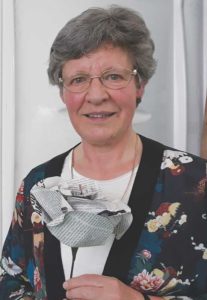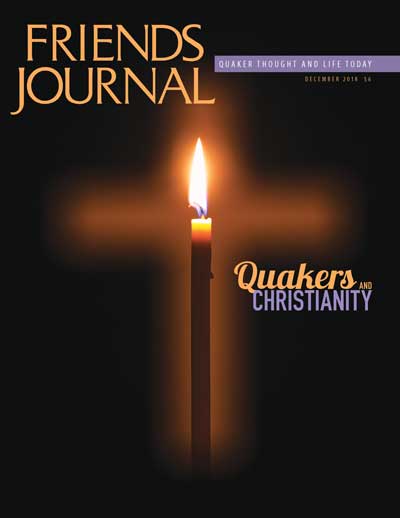
Middletown Friends recognize unmarked slave burials
On Saturday, October 6, over 300 people attended a memorial service for the forgotten slaves buried at Middletown Friends Meetinghouse in Langhorne, Pa. The service included songs performed by a choir from Lincoln University, a nearby historically Black university; the dedication of two memorial plaques recognizing the previously unmarked sites; readings of letters of manumission, legal documents that released slaves owned by Middletown Friends; and a period of open worship.
Middletown Meeting member Holly Olson initiated the memorial drive when she learned of similar recognitions at nearby Pennsylvania Friends meetings Upper Dublin and Abington. She reached out to nearby Black residents and the African American Museum of Bucks County to help plan the memorial service and plaques.
“It’s important for Friends to know that the memorial service wasn’t held for Black or white Friends,” Olson said. “It was held for the African American community in and around Langhorne.” She hopes that the Middletown effort will prompt other meetings to research possible unmarked slave burials in their graveyards.
The memorial marking one of the sites reads:
This plaque is in remembrance of the forgotten slaves who were owned by members of Middletown Monthly Meeting. They were buried in unmarked graves on this land from 1693 until 1703. We now stand as witnesses to their existence as enslaved people. We acknowledge that they lived and did not die in vain.
A second plaque marks a second graveyard on the Middletown property:
In 1792, this plot of land was purchased for the burials of free Africans in the community. . . . From 1792 until about 1816, an unknown number of people were laid to rest here, their names known only to God.
In the program printed for the service, Middletown Meeting members reflected on their history:
Members of Middletown Meeting are taking the steps to acknowledge and honor the enslaved and free people of African descent who are buried on the Meeting’s property. Because these graves are unmarked, as was the custom in Friends’ cemeteries at the time, memorial markers have been placed at the site of each burial ground. As members of Middletown Friends Meeting gained more knowledge of their history, they discovered past practices which are now viewed as intolerable. This memorial celebration is an attempt to give voice to people who were excluded as a result of these practices.
Brenda Cowan, a lifelong area resident, leader in Langhorne’s Black community, and member of the planning committee, commented after the service: “The word around Langhorne is so positive,” she said. “People who were not there are wishing they had gone. I have heard from people who say it was a beautiful event and they are going to be talking about it for years.”
Quaker astrophysicist, passed over for Nobel, receives $3-million breakthrough prize

On September 6 Quaker astrophysicist Jocelyn Bell Burnell was announced as the winner of a $3-million Special Breakthrough Prize in Fundamental Physics. The award, given “for fundamental contributions to the discovery of pulsars, and a lifetime of inspiring leadership in the scientific community,” comes 50 years after Bell Burnell’s significant role in the discovery of pulsars.
In 1967, as a postgraduate student Bell Burnell played a major role in the discovery of pulsars, one of the most important astronomical discoveries of the twentieth century. In 1974, when the Nobel Prize in Physics was awarded for the discovery of pulsars, her doctoral adviser, Antony Hewish, was one of the recipients, but Bell Burnell was not named.
Reflecting on the challenges she faced to take science classes after age 12, Bell Burnell told the Washington Post, “The assumption was that the boys would do science and the girls would do cookery and needlework.”
Born in Northern Ireland, Bell Burnell is a prominent and active Quaker. She delivered the Swarthmore Lecture “Broken for Life” at Britain Yearly Meeting in Aberdeen in 1989. She was clerk to Britain Yearly Meeting in 1995, 1996, and 1997, and served as clerk of the Central Executive Committee of Friends World Committee for Consultation from 2008 to 2012. “My astronomy and my Quakerism have grown up together and are comfortable bedfellows,” she shared in 2013, when she gave the Backhouse Lecture in Canberra, Australia, titled “A Quaker Astronomer Reflects: Can a Scientist Also Be Religious?,” which was also published as a pamphlet (reviewed in FJ Nov. 2014).
Bell Burnell is donating the prize money to fund women and underrepresented ethnic minority and refugee students to become physics researchers. “I don’t want or need the money myself and it seemed to me that this was perhaps the best use I could put to it,” she told BBC News.






Comments on Friendsjournal.org may be used in the Forum of the print magazine and may be edited for length and clarity.